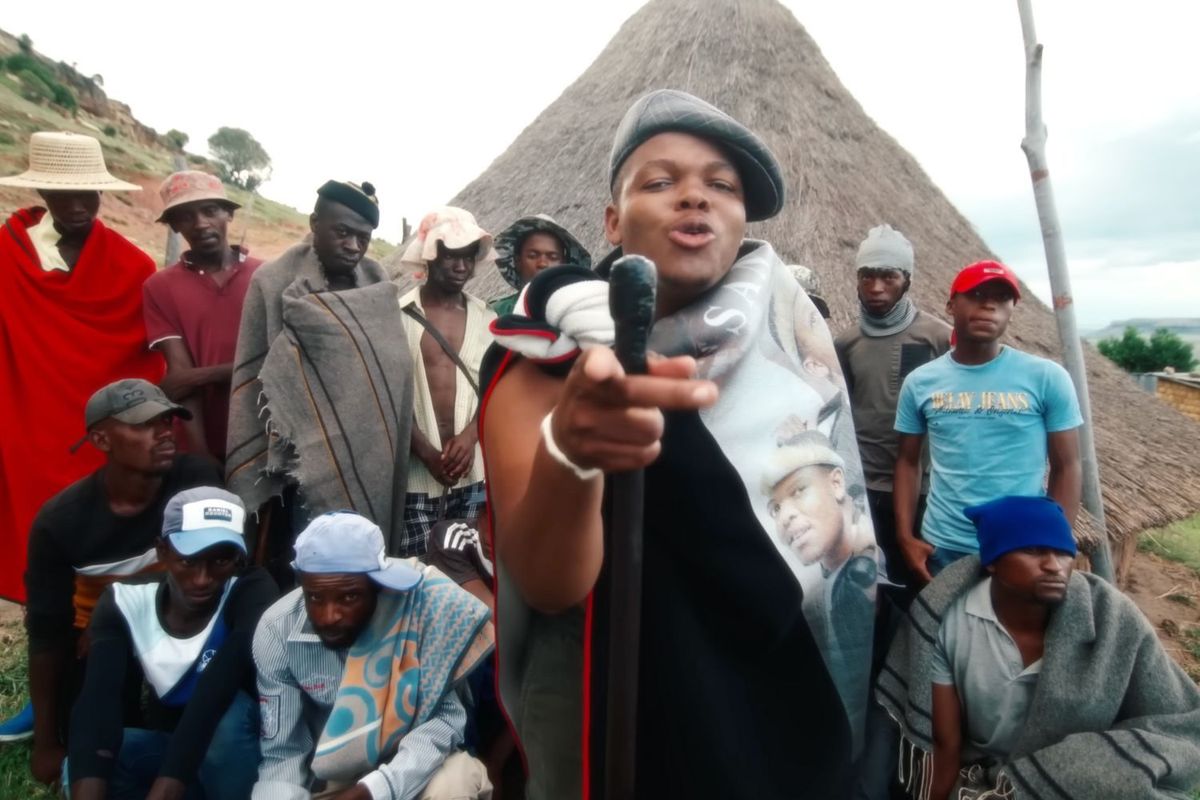Lesotho’s Sannere Honors His Ancestors on New Album, 'Sehopotso'
The singer expands his sound on 'Sehopotso,' a six-track project weaving gospel, reggae, and famo music influences into a meditation on dreams, fame, and ancestral memory.

Sannere’s new EP, “Sehopotso,” is a tribute to the ancestors and a testament to growth.
On his new album Sehopotso, which translates to “remembrance” in Sesotho, Lesotho’s Sannere builds on the sonic blueprint he laid with the wildly successful Pha-Balimo EP in 2024. The six-track project meditates on the power of dreams, the weight of fame, the glory bestowed on him by ancestors, and, of course, the pull of romantic love.
“This project represents a more mature side of my artistry,” he says. “I challenged myself by experimenting with new sounds, different from what I usually create, and it allowed me to grow in the process.”
That growth shows. On “Ka Semate Letebele,” Sannere embraces change while remaining grounded amid newfound attention. He insists money hasn’t changed him; he still visits the same people and keeps the same circle. Maleboo features here, delivering with lyrical and melodic precision.
“Maapara Kobo” finds him reflecting on the road travelled so far. With Wave Rhyder’s soaring melodies, Sannere recalls being doubted for staying in Lesotho: “ho ne ho thoe Sannere u luletse’ng Lesotho, talenta ha e patale, ak’u lebe Makhooeng” (“they used to ask why I’m still in Lesotho where talent doesn’t pay, suggested I go to the White Man to earn a living”). The verse echoes the restless dreams and disappointments of youth across the African continent who imagine opportunity everywhere but home. Yet Sannere also acknowledges what has changed: “hona joale ke fetohile mohlala, bacha ha ba nyahame ba hopotsoa bitso la ka” (“nowadays I’m a role model, youth in despair are told to look to me as a source of hope”).
Wave Rhyder returns on “Lefats’e,” a track that carries the communal spirit of Malome Vector’s “Dumelang.” Here, Sannere nods to the creative chain linking him and his peers back to famo greats. The line “khupa e siile mahe lapala-paleng, ke shoetsoe ke molebo, leraka” recalls Famole’s classic “Likhupa Li Siile Mahe,” weaving his voice into a living archive of Sesotho song.
That reverence continues on “Melele Ea Pele,” where Sannere gives flowers to a pantheon of famo legends. From Famole and Hatlane to Sanko, Lampi le Lehlohonolo, Moketa, Mantša, Puseletso Seema, and Apollo Ntabanyane. It’s a roll call of ancestors in sound, whose influence fuels the Basotho renaissance of today.
“Sesotho may not be a universal language,” he reflects, “but through the unique sound I create, listeners are eager to connect and discover the message within my songs. Because of this, I’ve seen more bookings both internationally and locally. I truly appreciate my supporters, and I pray they continue to walk this journey with me.”
With Sehopotso, Sannere reaffirms his position as a guiding light and one of Lesotho’s most vital voices, consistently bridging the past with the present through a strong understanding of how honoring our memory and our ancestors can make for a better future.
- The Best Southern African Songs Right Now: July 2025 Edition ›
- The Best Southern African Songs of 2024 ›
- Is Sannere Lesotho’s Biggest Artist Ever? ›